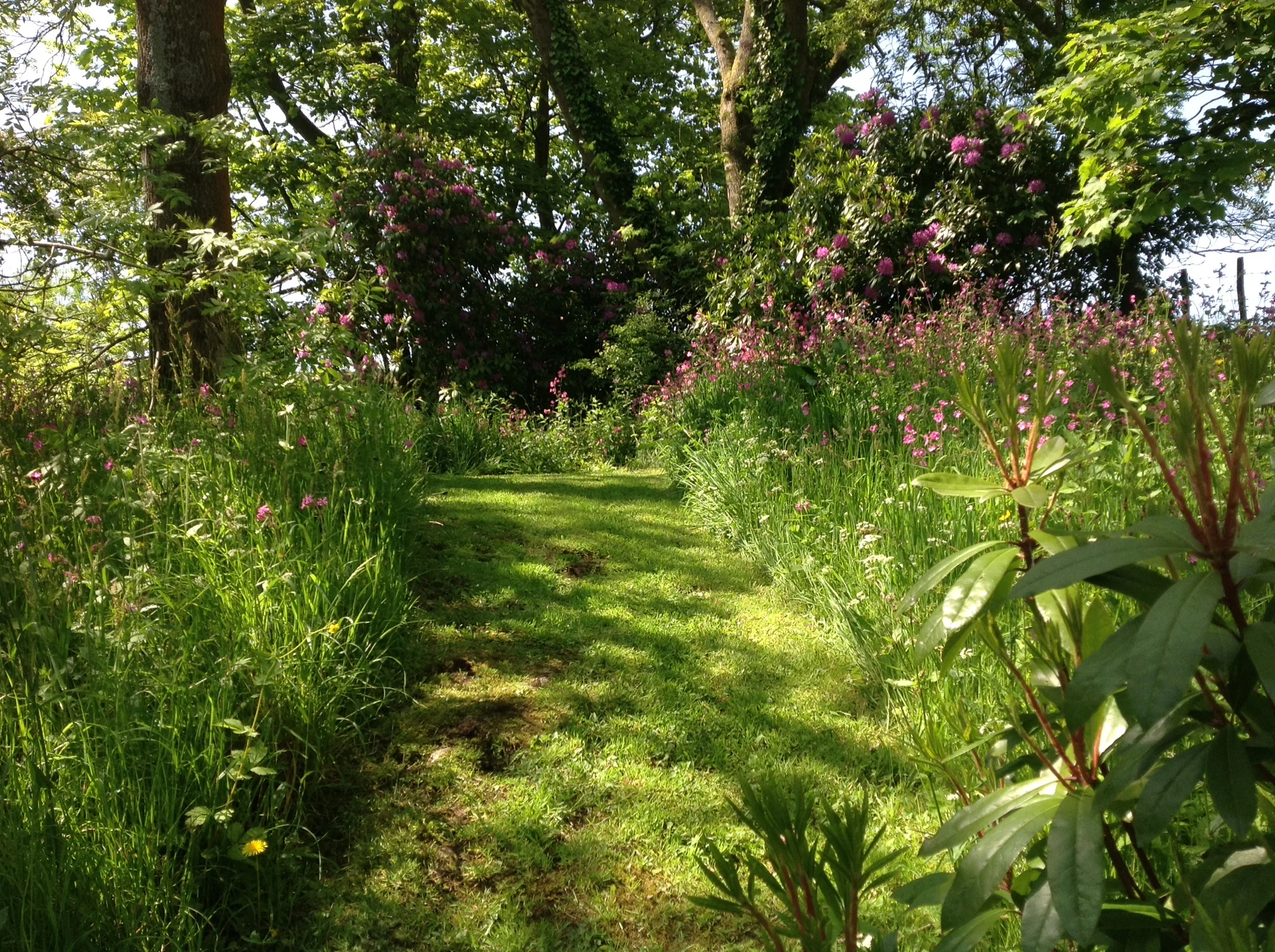The wild part of our garden is looking beautiful; all the trees are now in fresh green leaf and most have tiny flowers only noticeable if you look carefully. The horse chestnut is not so modest and shows off with a blaze of large white candles. And underneath the canopy of leaves are the wild flowers: the bluebells now over but bearing seed, and the red campion that is everywhere, dotted through with small white, feathery plants, the pignut.
I’m always keen to eat our garden produce. It’s too early for soft fruit but we have been gorging on asparagus – absolutely delicious! Chard is our latest success and we have enjoyed its prolific green leaves, although I must admit I’ve dumped the stalks on the compost heap.
My DH almost became a botanist and knows his plants, so when he told me that the root or bulb of the pignut had a nice and nutty taste I duly ate one he dug up. It tasted rather like a nutty radish and I was pleased to have experienced eating something that our hunter-gatherer ancestors would have been familiar with.
Unlike us I expect our forebears were aware of the side effects – or they had stronger stomachs – because I woke in the night with griping pains and spent the morning running to the loo. Gerard’s Herbal, or The Generall Historie of Plantes (first published in 1597) says that pig nuts were grated to use as an aphrodisiac - I’m not at all sure about that! I think that from now on I shall enjoy them for their beauty, not taste.
I particularly like white flowers and our white lilac, planted 12 years ago when we started to make this garden, is laden with blooms, and I wonder whether to bring some into the house, but so far I have not. This is because a) I’m not sure if they would droop immediately and so need some sort of special treatment involving the stems being plunged in boiling water, and b) because my mother always said that it was unlucky to bring lilac into the house. I am not superstitious but if my mother didn’t do it, then I won’t either.




